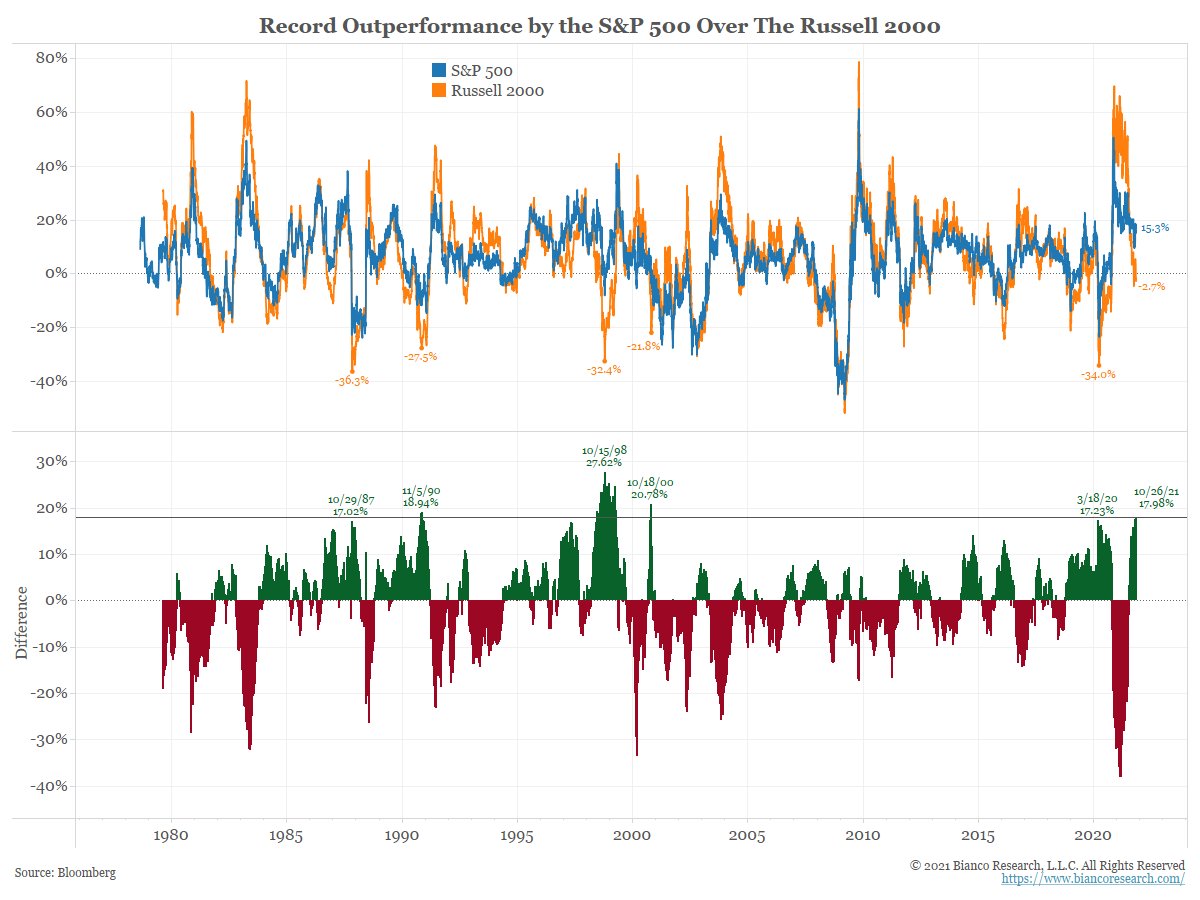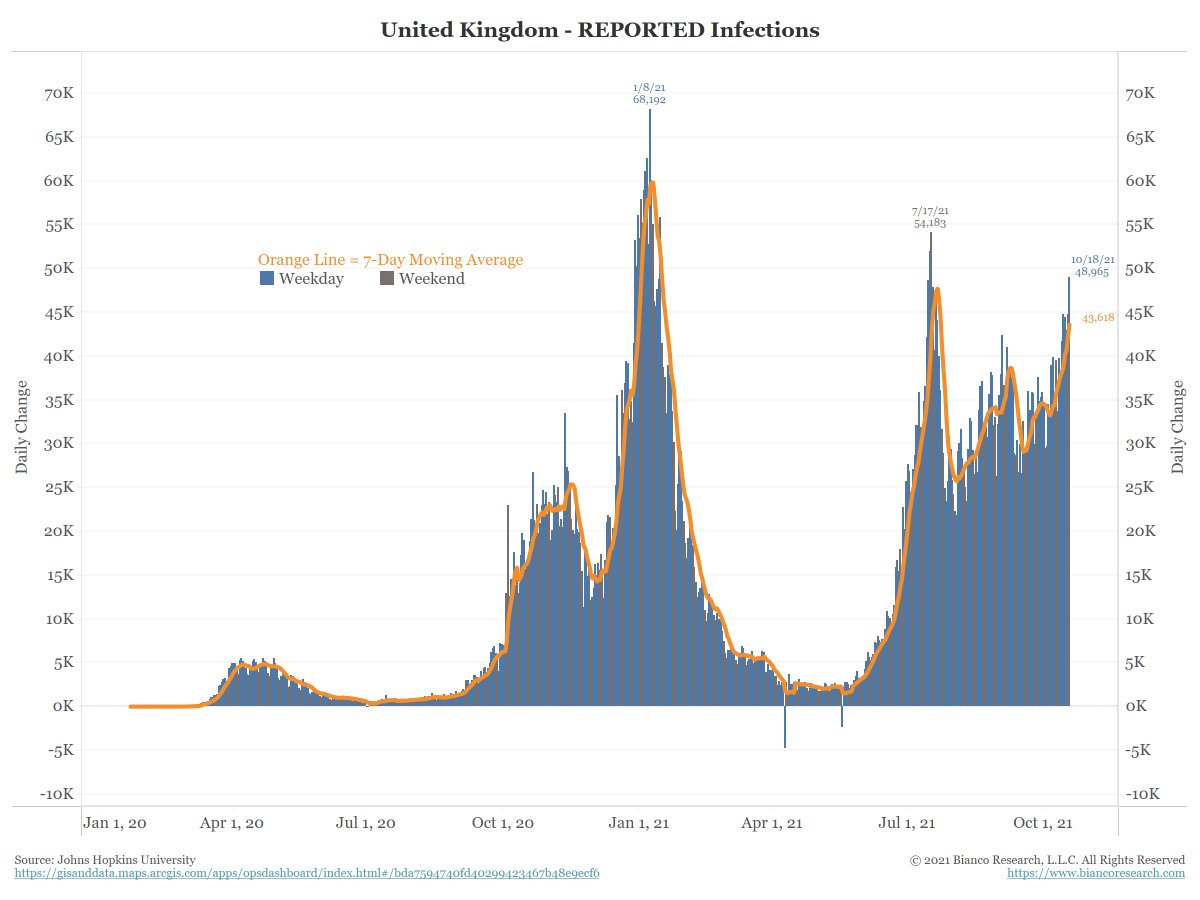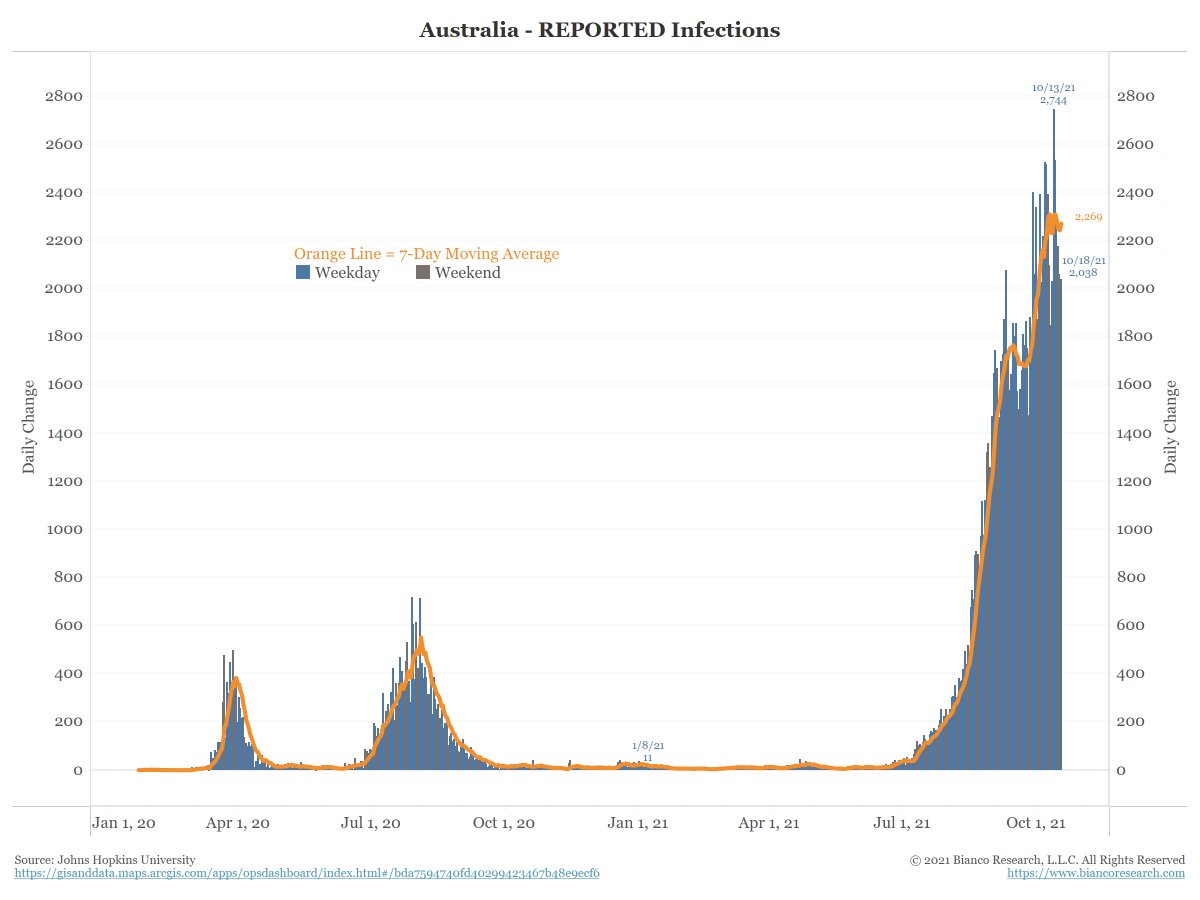
1/16
The market is pricing in a far more aggressive response to inflation than economist or the Fed currently envision.
This matters are the market is major voice in setting policy. It is sending a powerful message.
A thread to explain.
The market is pricing in a far more aggressive response to inflation than economist or the Fed currently envision.
This matters are the market is major voice in setting policy. It is sending a powerful message.
A thread to explain.
2/16
The chart below shows selected fed funds futures curves since September 3 (blue).
The market is pulling rate hikes forward almost every day (curves shifting left), perhaps as a result of the higher inflation expectations in recent weeks.
The chart below shows selected fed funds futures curves since September 3 (blue).
The market is pulling rate hikes forward almost every day (curves shifting left), perhaps as a result of the higher inflation expectations in recent weeks.

3/16
The CME’s “Fed Watch” tool offers another way to view the market’s probability on Fed policy. This tool uses the fed funds futures forward curve shown above.
A probability over 50% signifies a rate hike is priced in.
cmegroup.com/trading/intere…
The CME’s “Fed Watch” tool offers another way to view the market’s probability on Fed policy. This tool uses the fed funds futures forward curve shown above.
A probability over 50% signifies a rate hike is priced in.
cmegroup.com/trading/intere…
4/16
When is the first rate hike is priced in, to a range of 0.25% to 0.50%?
Cyan line shows the odds at the July 27, 2022 FOMC meeting first moved above 50% earlier this month.
Green shows the odds of a hike by the June 15, 2022, FOMC meeting, moved above 50% late last week.
When is the first rate hike is priced in, to a range of 0.25% to 0.50%?
Cyan line shows the odds at the July 27, 2022 FOMC meeting first moved above 50% earlier this month.
Green shows the odds of a hike by the June 15, 2022, FOMC meeting, moved above 50% late last week.

5/16
The Fed is expected to start tapering its $120B/mo buying at next week's FOMC meeting (Nov 3).
They are expected to reduce by $15B/mo, so all purchases would end next June.
Given the chart above, the mkt believes the Fed would immediately start hiking rates at that point.
The Fed is expected to start tapering its $120B/mo buying at next week's FOMC meeting (Nov 3).
They are expected to reduce by $15B/mo, so all purchases would end next June.
Given the chart above, the mkt believes the Fed would immediately start hiking rates at that point.
6/16
Also, note the purple line above, which shows the odds of a hike by the May 4, 2022 FOMC meeting, at 38%.
If this odd moves above 50%, it could signal that the Fed needs to get more aggressive ... start raising rates before the taper finishes? Or, speeding up the taper?
Also, note the purple line above, which shows the odds of a hike by the May 4, 2022 FOMC meeting, at 38%.
If this odd moves above 50%, it could signal that the Fed needs to get more aggressive ... start raising rates before the taper finishes? Or, speeding up the taper?
7/16
The CME’s tool can also show the timing of a 2nd rate hike.
Yellow = odds of two hikes by the Nov 2, 2022 FOMC meeting is now above 50%.
Simply put, the mkt priced in a 2nd hike for late 2022 last week.
Red = odds of a 2nd hike by the Sep 21, 2022 FOMC meeting, is 49%.
The CME’s tool can also show the timing of a 2nd rate hike.
Yellow = odds of two hikes by the Nov 2, 2022 FOMC meeting is now above 50%.
Simply put, the mkt priced in a 2nd hike for late 2022 last week.
Red = odds of a 2nd hike by the Sep 21, 2022 FOMC meeting, is 49%.

8/16
Based on the chart above, the market is essentially pricing in a Jun 2022 rate hike followed by another in Sept.
Finally, a 3rd rate hike (0.75%-1.00%), is also a possibility. Blue shows the odds of a 3rd hike by the Feb 1, 2023, FOMC meeting crossed above 50% on Friday.
Based on the chart above, the market is essentially pricing in a Jun 2022 rate hike followed by another in Sept.
Finally, a 3rd rate hike (0.75%-1.00%), is also a possibility. Blue shows the odds of a 3rd hike by the Feb 1, 2023, FOMC meeting crossed above 50% on Friday.

9/16
The mkt’s rate hike schedule is not what economists expect. This chart plots the diff between the mkt’s expectations and economists’ expectations.
Jan 2023 fed funds futures(blue), show an implied rate of 0.63% at the end of 2022, Much of this rise came in the last month.
The mkt’s rate hike schedule is not what economists expect. This chart plots the diff between the mkt’s expectations and economists’ expectations.
Jan 2023 fed funds futures(blue), show an implied rate of 0.63% at the end of 2022, Much of this rise came in the last month.

10/16
Bloomberg’s survey shows economists above expect the funds rate to end 2022 at 0.40% (purple), which equates to only 1 rate hike.
They expect the funds rate to be 0.55% at the end of Q1 2023 (red), just short of a 2nd rate hike.
Bloomberg’s survey shows economists above expect the funds rate to end 2022 at 0.40% (purple), which equates to only 1 rate hike.
They expect the funds rate to be 0.55% at the end of Q1 2023 (red), just short of a 2nd rate hike.
11/16
In fact, only 5 of the 66 economists surveyed projected the funds rate to be above the market’s price at 0.63%.
Restated, economists are not nearly as aggressive as the market in pricing in rate hikes.
In fact, only 5 of the 66 economists surveyed projected the funds rate to be above the market’s price at 0.63%.
Restated, economists are not nearly as aggressive as the market in pricing in rate hikes.
12/16
Finally, the charts below show where the Fed projected the funds rate as of their latest Summary of Economic Projections. Each blue dot represents an FOMC participant’s estimate for the funds rate at the end of next year.
Finally, the charts below show where the Fed projected the funds rate as of their latest Summary of Economic Projections. Each blue dot represents an FOMC participant’s estimate for the funds rate at the end of next year.

13/16
Red above = median FOMC estimate. Added to the chart is the median economists’ forecast (brown) and the mkt expectation (green).
The mkt is more aggressive than the Fed/economists. Not a single FOMC "dot" sees the fund rate as high as the mkt’s pricing by the end of 2022.
Red above = median FOMC estimate. Added to the chart is the median economists’ forecast (brown) and the mkt expectation (green).
The mkt is more aggressive than the Fed/economists. Not a single FOMC "dot" sees the fund rate as high as the mkt’s pricing by the end of 2022.
14/16
Clearly the Fed sets monetary policy, but we would caution the market is a major voice in the Fed’s thinking.
Right now that voice is sending a powerful signal that the Fed needs to get more aggressive in its view of rate hikes.
Clearly the Fed sets monetary policy, but we would caution the market is a major voice in the Fed’s thinking.
Right now that voice is sending a powerful signal that the Fed needs to get more aggressive in its view of rate hikes.
15/16
The longer the mkt stays at these levels, which it only reached in the last week, the louder this voice.
History shows the Fed/economists often go through the 5 stages of grief before they accept the mkt message.
The longer the mkt stays at these levels, which it only reached in the last week, the louder this voice.
History shows the Fed/economists often go through the 5 stages of grief before they accept the mkt message.
16/16
If the mkt continues to push its current narrative, expect periods of denial, anger, bargaining, depression, and then finally acceptance from the Fed
The mkt is offering its opinion. Right now it is showing real signs of concern that the Fed is behind the inflation curve.
If the mkt continues to push its current narrative, expect periods of denial, anger, bargaining, depression, and then finally acceptance from the Fed
The mkt is offering its opinion. Right now it is showing real signs of concern that the Fed is behind the inflation curve.
• • •
Missing some Tweet in this thread? You can try to
force a refresh















